If we turn to the term “boho”, then we get a completely understandable translation from French: “bohème” - bohemia or gypsy. On the territory of modern Bohemia, there was once an area called Bohemia, where in the Middle Ages a huge number of gypsies lived, whom the French called Bohemians (bohémiens). What was characteristic of the gypsies of this area? The same as for the modern man of this nation: a nomadic and free way of life, bright multi-layered clothes, antiques in endless quantities, nomadic with their owners. And since in the 17th century the same poor people of art (musicians, artists, poets) often lived in poor Bohemia, the image of the gypsies directly influenced the work they created.
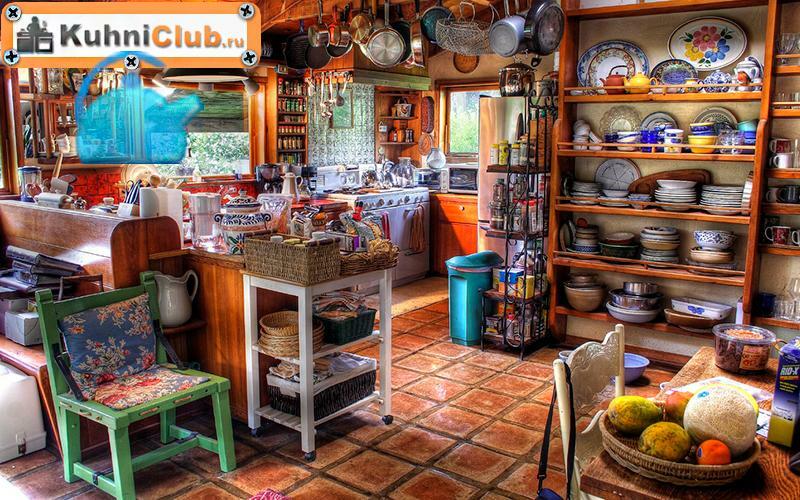
Content
- Boho style features
- Combination with other styles
- Furniture
- Decor
- Material
- Texture
- Greenery
- Floor
- Walls
- Interior in BOHO style. What is boho chic? Video
Boho style features
Seeing the boho style in the interior of the kitchen for the first time, it evokes the following associations for almost everyone: exotic, non-standard, excessive brightness, chaos. According to the representation of this style in the design of the room, its owner can be characterized as a freedom-loving person who loves travel, freedom and various little things, most often incompatible between themselves. Despite its “crazyness” in the good sense of the word, bohemia is not created to weigh down or to strain the kitchen with colored decor collected from all over the world - the style looks quite harmonious, authentic. You just need to be careful with it. In this case, it is not necessary to contact the services of a professional designer. Having studied photos of real kitchens posted on the Internet, you can create a unique style that is unusual for most people. What is its feature?
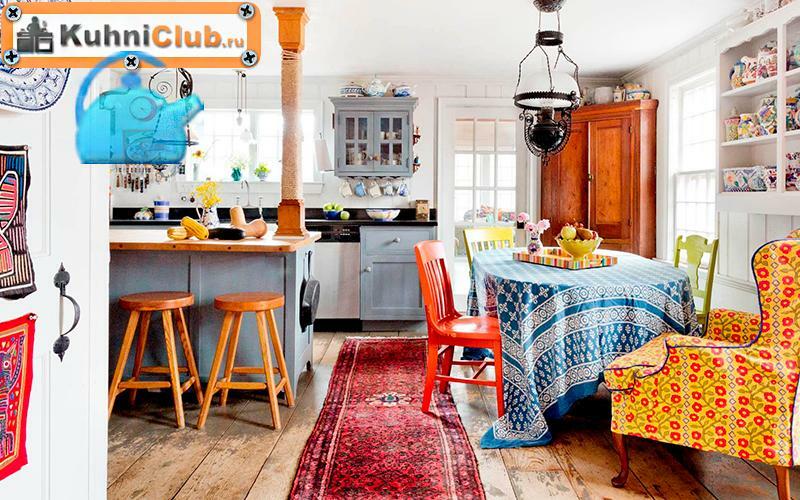
Combination with other styles
Let's start with the fact that the boho style, also known as bohemia, bohemian, boho-chic, bohemian style or even "chaos in the interior", is more popular in Europe than in Russia. And while the Europeans are gradually “gorging themselves” on this style, for a Russian person, bohemianism is still something fresh, new, interesting, exotic.
The main feature of creating a bohemian-style kitchen is that it perfectly "overlays" an existing style - boho does not need to be created from scratch. Classic style with the participation of bohemia, it will become more “soft”, having lost excessive severity. Retro style also goes well with boho - they are literally made for each other. Another successful partner for bohemia - Scandinavian stylewith which he has a lot in common. And let's talk about this in a little more detail.
Initially being a very catchy style, boho existed as an independent style in the distant past. But since the 2000s, its “transformation” has taken place: bohemianism has merged with the most concise, calm, simple, but very popular modern style - Scandinavian. The white scandi base perfectly smooths out the color “aggression” of boho, giving the new style individuality and taste. As you can see in the photo below, bohemia can be quite a restrained style, the main presence in the kitchen of various ornaments, wicker things, hanging chairs, carpets is what characterizes boho.
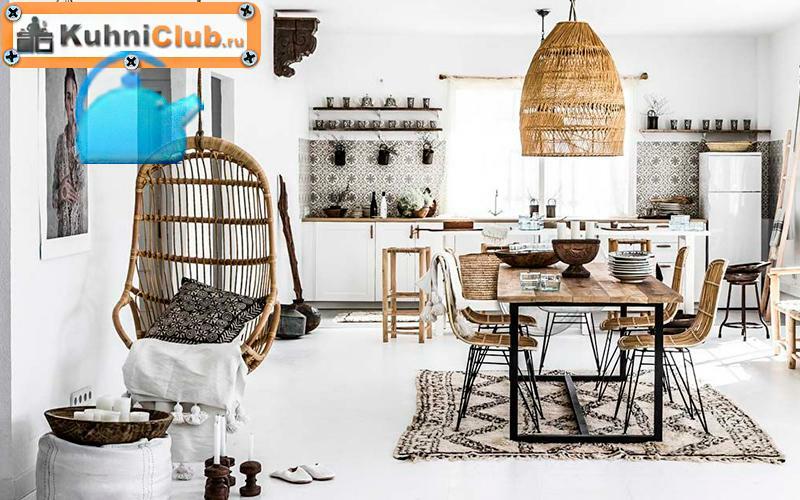
Furniture
For those who, during the renovation or simple transformation of the kitchen, are not ready to get rid of old furniture, but at the same time prefers to bring something new, modern into the interior, bohemia will be a good option to combine everything in one space. Yes Yes! Old furniture combined with new - this is typical of the boho style! And the older the texture of the furniture, the better. The main thing is to create coziness and convenience that can turn off the mind from the hustle and bustle.
Perfect as a place to relax floor cushions from soft materials, pouffes and other low, wide furniture. Of course, such spacious furniture is better suited for a large kitchen or kitchen-living room. Furniture can have wicker or wooden bases, and on them lay blankets with beautiful large knitting, pillows of different textures brought from different countries - beauty, as always, is in the details.
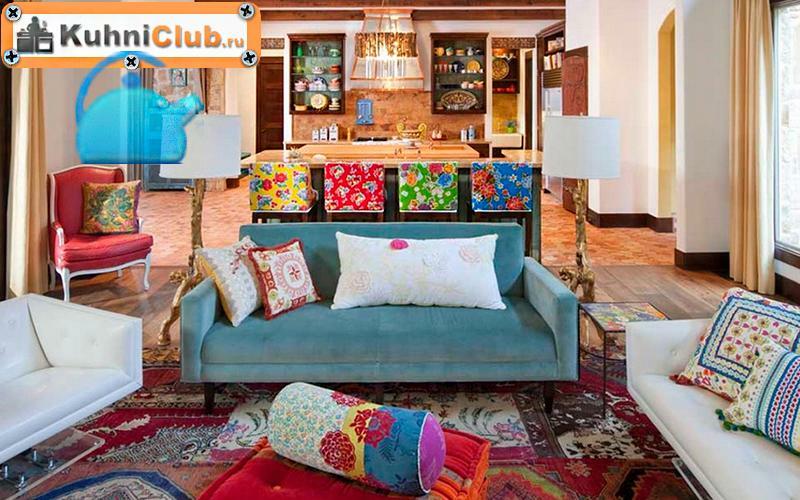
Decor
Boho is not always a riot of colors, although it fully characterizes this style. As we wrote above, if there is no desire to make a multi-color rainbow out of the kitchen, you can turn to a more restrained option: just place it on a calm scandi kitchen decor with ethnic ornaments, African tribal patterns, different geometries, etc. If the soul requires a holiday, then you should choose the following popular colors of bohemia: olive, terracotta, mustard yellow, calm blue, vintage shades, that is, pastel, but muted and slightly dirty. The classic colors of the bohemian style are presented in the following photo:
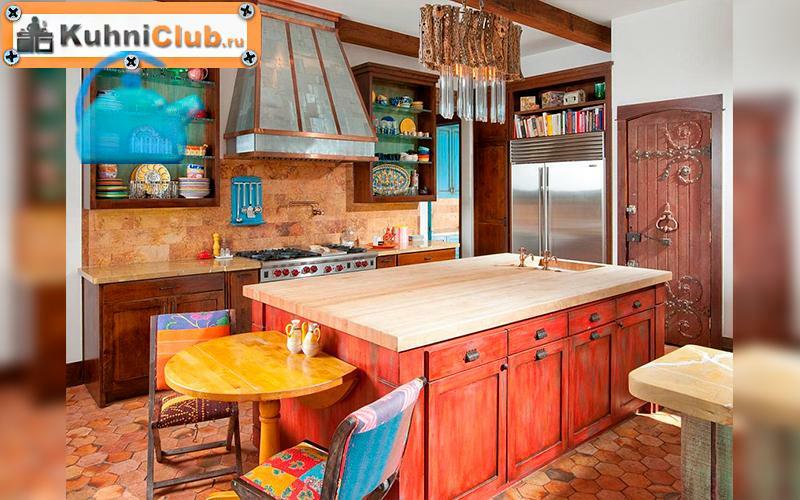
Material
In recent years, designers prefer to work with ecological, natural materials, and boho is happy to support this trend. Bohemia loves sisal material - a natural coarse fiber obtained from agave leaves. It could be a sisal carpet, and the carpets in the kitchen are a very real story, detailed in our article “Carpet in the kitchen: either for or against. There is no third!“. The layering of carpets is also appropriate: carpets of different sizes, patterns, materials can be roughly thrown on top of each other.
Moroccan or Persian rugs are a gem in any bohemian-inspired kitchen. But remember: the cost of such carpets is very high.
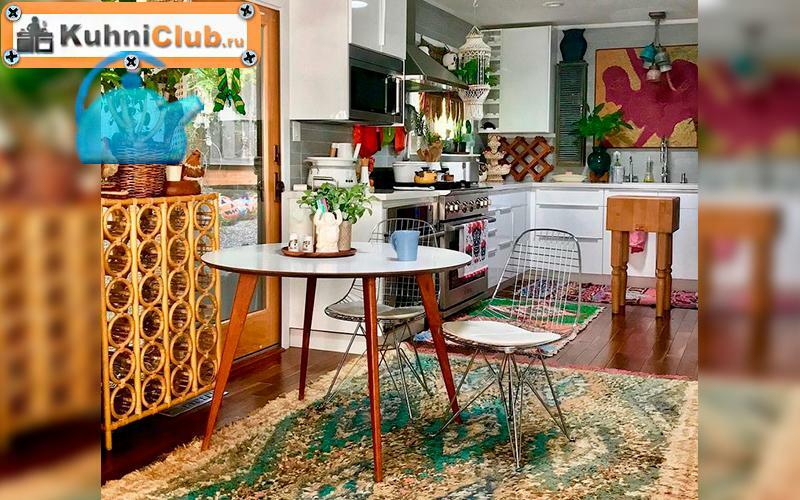
Bohemia also loves wicker, straw, rattan things. And we are talking not only about chairs, armchairs and other furniture, which we have already talked about. This list can be continued, remembering wicker lamps, including hand-made ones, flower vases, baskets, which have been gaining popularity lately. At the same time, the size and number of baskets can be unlimited, and the pattern of each can be unique.
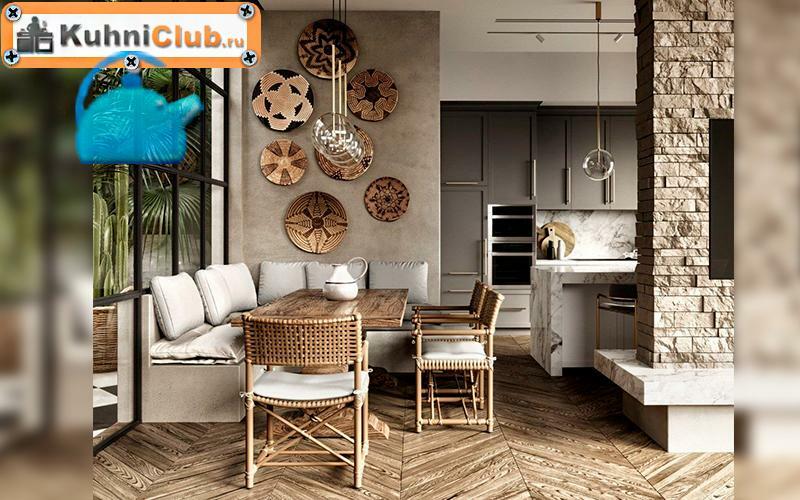
Do not forget about such an element of decor as macrame, so popular during our childhood.
There is never too much macrame in a boho style kitchen. Moreover, the designers add: the more of this decor in the room, the better.
Macrame gives the kitchen airiness, fullness, home comfort and, of course, antiquity. Dust collector, as many people think? Maybe. But everyone has the right to choose or not to choose a bohemian style for themselves.
Fringe, which has different lengths, for example, from 5 to 30 cm, can decorate both upholstered furniture (puffs) and frame furniture (chest of drawers), as well as lamps. A wall panel, hanging baskets, lamps and even a curtain can be made from macrame, as shown in the photo below. Fantasy has no limits!
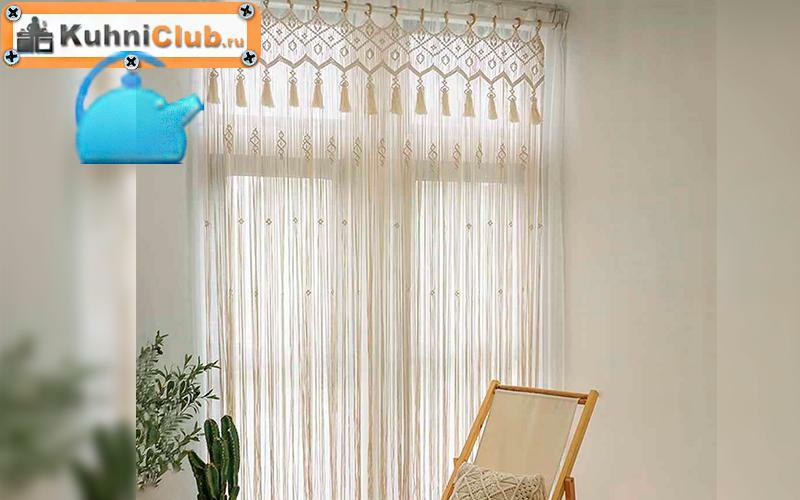
Clay is another natural material that feels great in our style. Numerous shades of clay best repeat the main colors inherent in boho. Clay can be figurines, pots, including those with a unique painting, coasters for various kitchen utensils, plates, dishes and other products. Clay pots can also be large, standing on the floor for decoration.
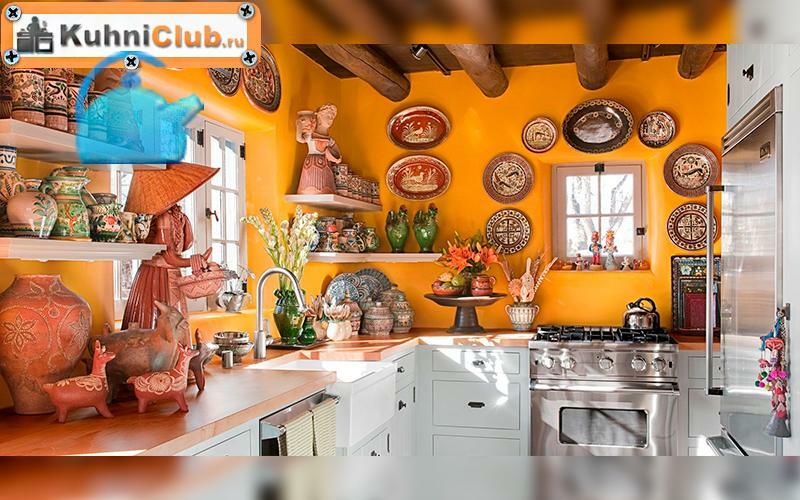
Almost everything is used for small decor: colored beads of various sizes, fringe-tassels, Moroccan metal lamps, long lumbar pillows and even fur capes, as if accidentally thrown on the backs of chairs or armchairs. The combination of incongruous - this is how boho can be characterized. In what other style can all of the above fit in one room? Look at the photo below:
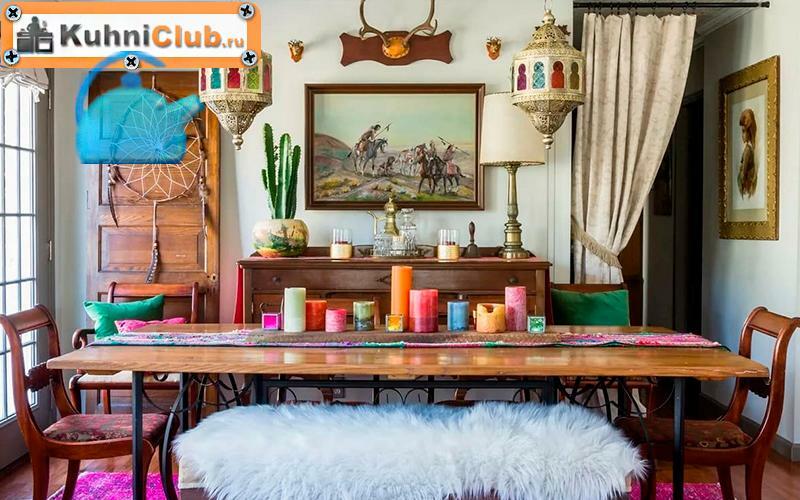
Texture
Boho seems to embrace the immensity, combining the features of Moroccan, Indian, Latin American styles, African tribes, Scandinavian and Slavic folklore. We have already said that one of the features of the style is the presence of all kinds of prints of ethnic origin. But for bohemia, texture is also important, with which it can be compared with style. shabby chic: silk and roughness, natural weaving and fluffy fur, coarse fibers and soft velvet surfaces, embroidery and knitting.
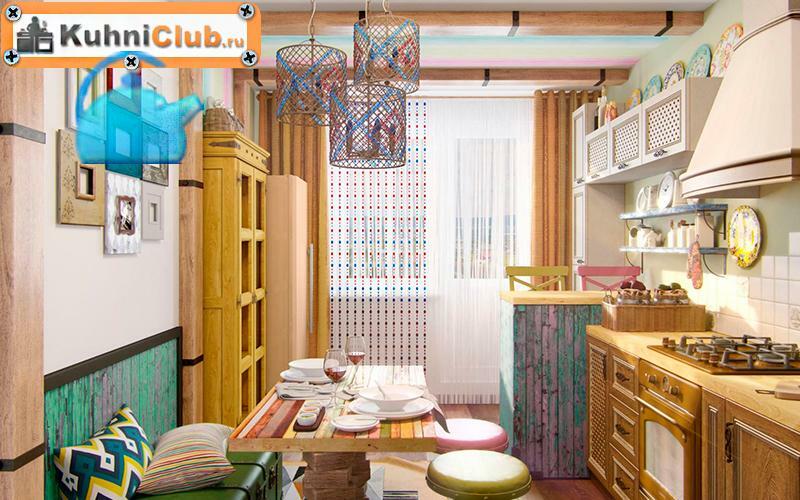
Greenery
Bohemian style loves light, so designers often ditch tulle on windows in favor of subtle curtains. This is also done so that the natural greenery, placed in all corners of the room, rages at any time. By the way, a large number of plants that turn the kitchen into a jungle, as well as ampelous greens that create a unique green vertical, are characteristic of boho.
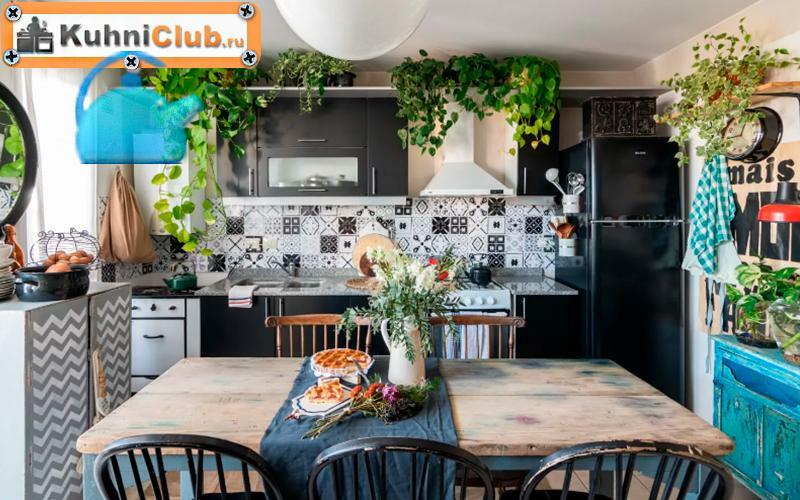
Floor
We have already talked about a lot, and we already have an idea of \u200b\u200bthe bohemian style. It's time to say a few words about the flooring. Designers do not recommend laying laminate in the kitchen in a boho style, it is better to prefer parquet or parquet board. This option will be more expensive, but in texture and pattern it is closer to this style.
It is also better not to give preference to gloss and “perfect wood pattern”. Do not forget: the more shabby and shabby the interior turns out to be, the better the bohemian style is emphasized.
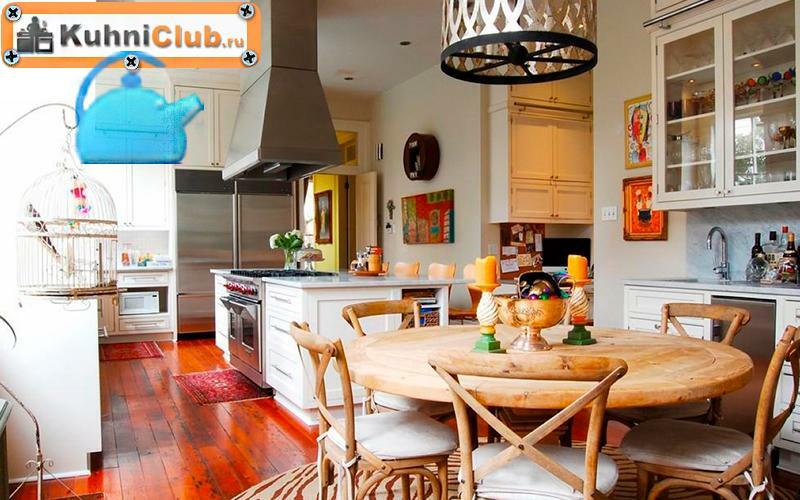
Walls
We already know that the ideal “companion” of boho is the Scandinavian style, characterized mainly by white, light, solid colors. Therefore, calm boho is the presence of white walls in the kitchen, most often finished “under plaster”. On a neutral wall, bright decor looks best in the form of, for example, a carpet with bright ornaments or geometric patterns, as well as hand-made paintings. Remember: handmade and bohemia are made for each other. At the same time, the richer the kitchen is filled with decor, the better. Turn your kitchen wall into a gallery with a collection of paintings, African wood masks, mirrors in unrealistic frames, straw products, macrame panels and other wall decorations. It's all boho style!
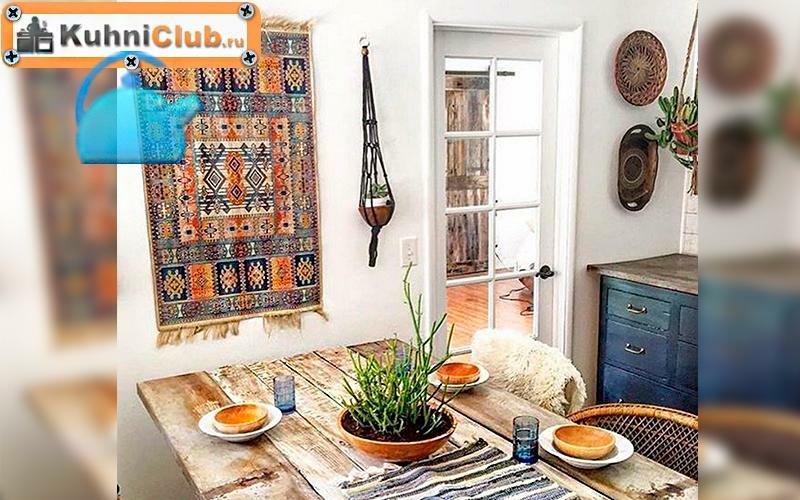
Having collected all conceivable and unthinkable characteristics about the bohemian style in one article, it becomes clear one thing: this style can either be accepted and loved forever, or admired and inspired by something own. But there will definitely not be anyone indifferent from what they see boho-kitchens!


